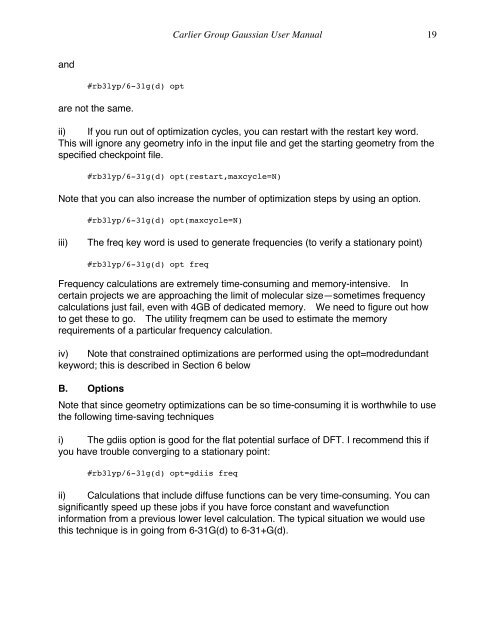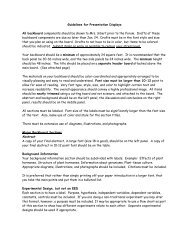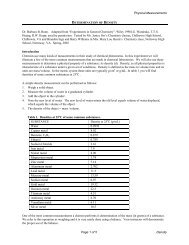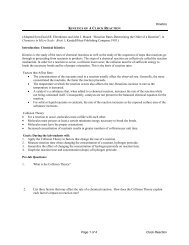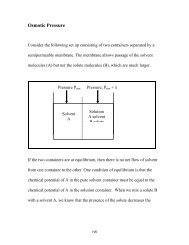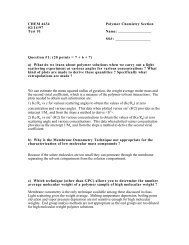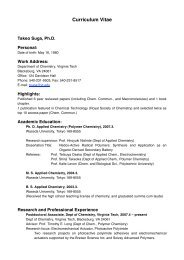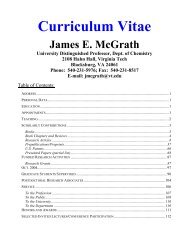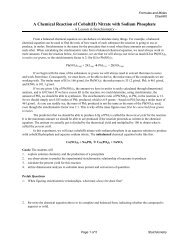Carlier Group Gaussian User Manual - Virginia Tech
Carlier Group Gaussian User Manual - Virginia Tech
Carlier Group Gaussian User Manual - Virginia Tech
You also want an ePaper? Increase the reach of your titles
YUMPU automatically turns print PDFs into web optimized ePapers that Google loves.
<strong>Carlier</strong> <strong>Group</strong> <strong>Gaussian</strong> <strong>User</strong> <strong>Manual</strong> 19<br />
and<br />
#rb3lyp/6-31g(d) opt<br />
are not the same.<br />
ii) If you run out of optimization cycles, you can restart with the restart key word.<br />
This will ignore any geometry info in the input file and get the starting geometry from the<br />
specified checkpoint file.<br />
#rb3lyp/6-31g(d) opt(restart,maxcycle=N)<br />
Note that you can also increase the number of optimization steps by using an option.<br />
#rb3lyp/6-31g(d) opt(maxcycle=N)<br />
iii)<br />
The freq key word is used to generate frequencies (to verify a stationary point)<br />
#rb3lyp/6-31g(d) opt freq<br />
Frequency calculations are extremely time-consuming and memory-intensive. In<br />
certain projects we are approaching the limit of molecular size—sometimes frequency<br />
calculations just fail, even with 4GB of dedicated memory. We need to figure out how<br />
to get these to go. The utility freqmem can be used to estimate the memory<br />
requirements of a particular frequency calculation.<br />
iv) Note that constrained optimizations are performed using the opt=modredundant<br />
keyword; this is described in Section 6 below<br />
B. Options<br />
Note that since geometry optimizations can be so time-consuming it is worthwhile to use<br />
the following time-saving techniques<br />
i) The gdiis option is good for the flat potential surface of DFT. I recommend this if<br />
you have trouble converging to a stationary point:<br />
#rb3lyp/6-31g(d) opt=gdiis freq<br />
ii) Calculations that include diffuse functions can be very time-consuming. You can<br />
significantly speed up these jobs if you have force constant and wavefunction<br />
information from a previous lower level calculation. The typical situation we would use<br />
this technique is in going from 6-31G(d) to 6-31+G(d).


